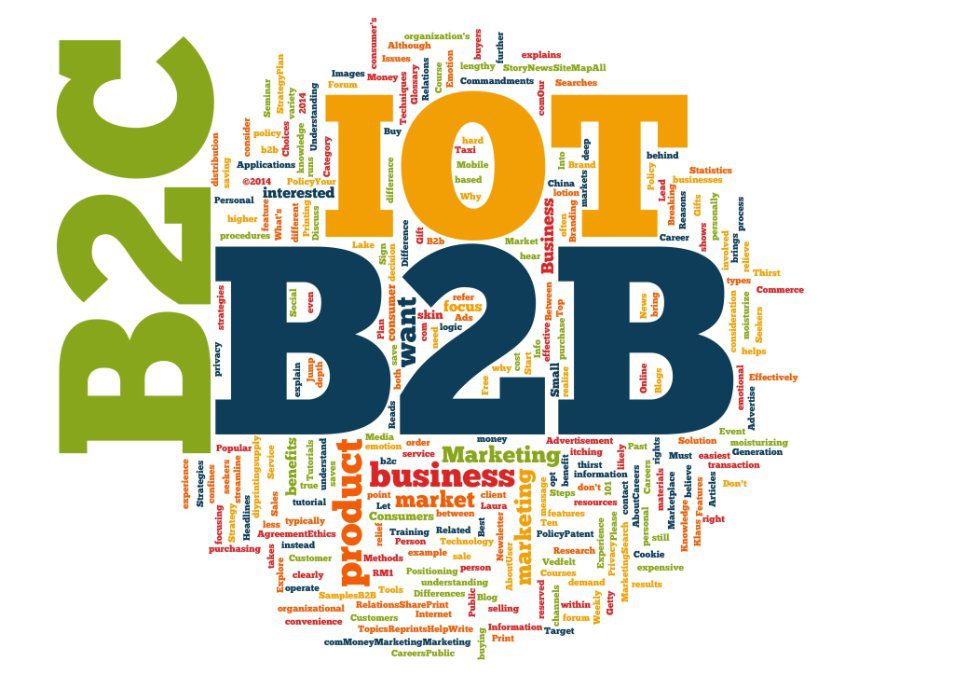When we look at the Internet of Things, the limelight is on whizbang connected gadgets, yet the real progress is coming from the B2B market.
Although many think of the Internet of Things as ‘the next’ phase of connectivity, the reality is the notion (and capability) to connect objects to the Internet has been around for nearly three decades. Machine-to-machine (M2M), as it is known in the enterprise, set the foundation for IoT. Only, instead of connecting one machine to another, we can now connect entire networks. To the extent IoT is mature (it’s not), it is more mature in the enterprise among B2B companies than it is in consumer-facing B2C brands. But B2C organizations aren’t starting from scratch; there are many important lessons the consumer-facing world can translate from enterprise environments.
In our research looking at how B2C brands can think about enhancing customer experience using the Internet of Things, we surveyed both B2B and B2C brands as well as vendors who support both. Following are three key findings from our research.
Start Small, Really Small
Enterprise strategists constantly reiterate the a dual imperative: one, don’t wait; dive in. But two, start small, very small. As a result, most strategists agree deploying new technology is a tiered process regardless of company type. This is especially the case with connected products/services because:
- External cultural barriers: Awareness, understanding, coverage of, and comfort with IoT remains inconsistent; Incremental changes, intuitiveness, ease of use, instant gratification, transparency essential for adoption. Regulations non-existent, changing, and varied by region.
- Internal cultural barriers: There may be doubters and naysayers within the organization at the decision-making or stakeholder level; Unclear ownership can cause political turf wars. Education and showing clear, empirical business results helps build confidence and alignment.
- Technological complexity: Building an infrastructure for interoperability is complicated to say the least. Ensuring data integrity is critical (and ongoing); systems integration takes time, resources, and prioritization; standards are lacking or inconsistent. Even single use case deployments can require substantial IT architecture.
B2B companies reiterate the importance of building a plan and rolling it out in a conservatively staged fashion– this is even more important in B2C given the sheer size (and volatility) of consumer markets. Starting with tightly scoped pilots serving a specific function, for a singular use case, and with precisely defined KPIs is key– whether an enterprise rolling out connectivity to its manufacturing equipment or a retailer deploying in-store beacons.
Replace, Don’t Reinvent Behaviors
Our research found that companies are most successful when deploying sensor-enabled experiences that are subtle, incremental, and intuitive in nature. IoT implementations often require users (whether consumers or employees) to adapt their behaviors in entirely new ways (e.g. employees using wearables for enterprise communications; consumers using an app to control lighting). Companies shouldn’t try to reinvent behaviors with aggressive changes to status quo, rather ease users in with clear value exchange and by using existing templates for interaction. For example, one B2B company interviewed visited grocery stores to observe how shoppers use self check-out kiosks in order to inform the design for connected [self-serve] refrigerators used for biomedical research.
Rolling out connected products and services isn’t inexpensive. For B2B and B2C companies, ROI relies on user adoption; an even greater challenge (and higher expectation) among consumer users than business users.
Prepare for Scale
Scaling IoT initiatives is not a matter of purchasing more licenses; it requires the infrastructure to support it, sometimes spanning multiple departments. Many B2B companies caution B2C that, while modern tools allow for unprecedented speed, moving too quickly can outpace the ability to manage demand. Some examples of this include:
- Balancing agile development with due diligence: Moderate the pace (and zealousness) of the iterative nature of software development with diligent consideration of impact (e.g. hardware functionality, ease of use, interoperability, efforts from all teams involved, etc.)
- Providing and supporting feedback loops: IoT enables new ways for consumers to communicate with brands– both directly (e.g. outreach) and indirectly (e.g. through data collection). Be prepared to support feedback loops with proper resources (e.g. people, channels, content, shared access to the right tools), else you risk a failed ‘support’ experience.
- Aligning all teams across workflow: Connected products, services, and infrastructure can [inherently] impact multiple departments in the organization. Whether enterprise or consumer-facing use cases, scaling requires all relevant functions are aligned and trained on strategy, workflow/triage, risk, and collaboration and measurement tools.
Whether B2B or B2C, businesses must embrace IoT strategically, not as an bolt-on digital channel, but within the context and objectives of the larger organization. But what these tips also reflect is a human approach: one based on empathy; building trust by understanding possible pains. Humans resist change. We are curious, but easily creeped out. Ultimately what companies have to remember is, whether deploying IoT for employees or consumers, people are people.
This post was originally posted on Altimeter Group’s blog and can be found here.


